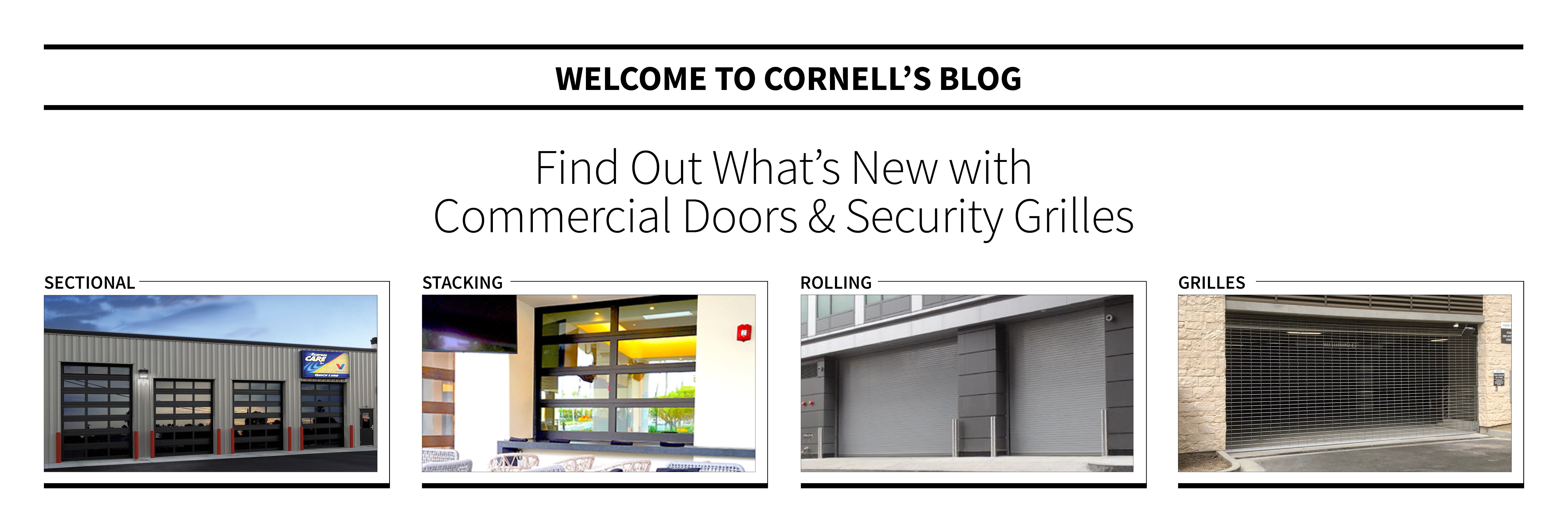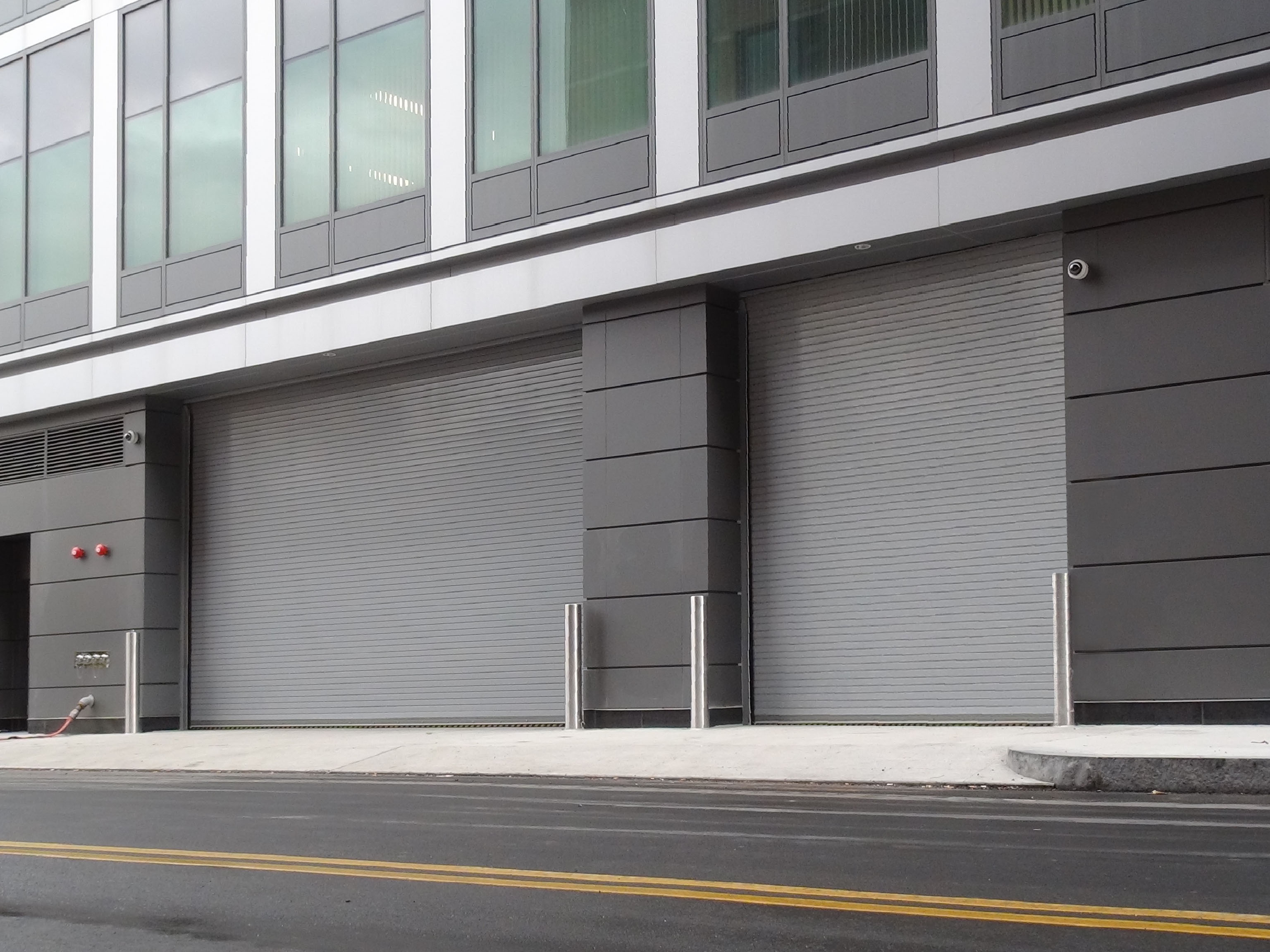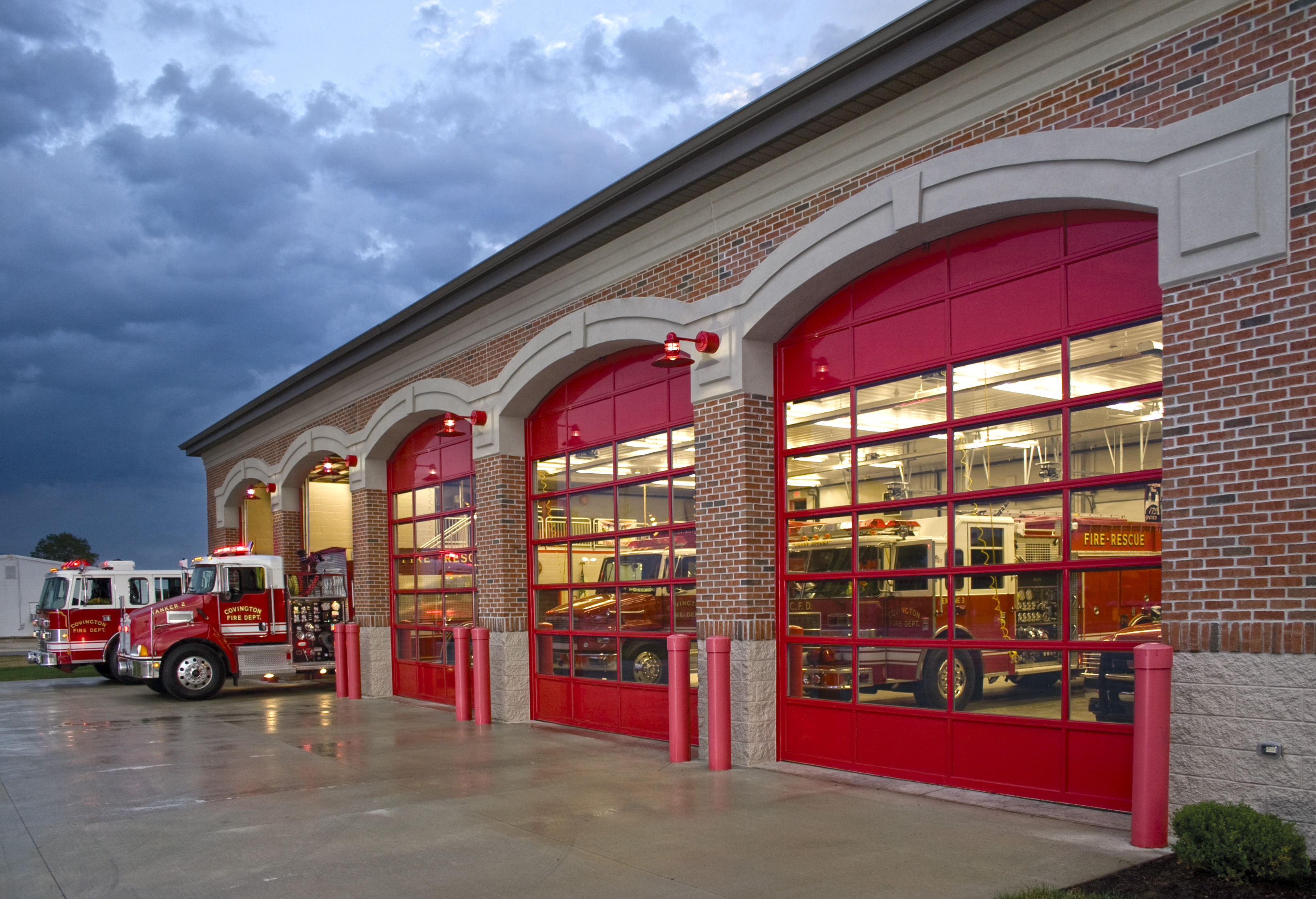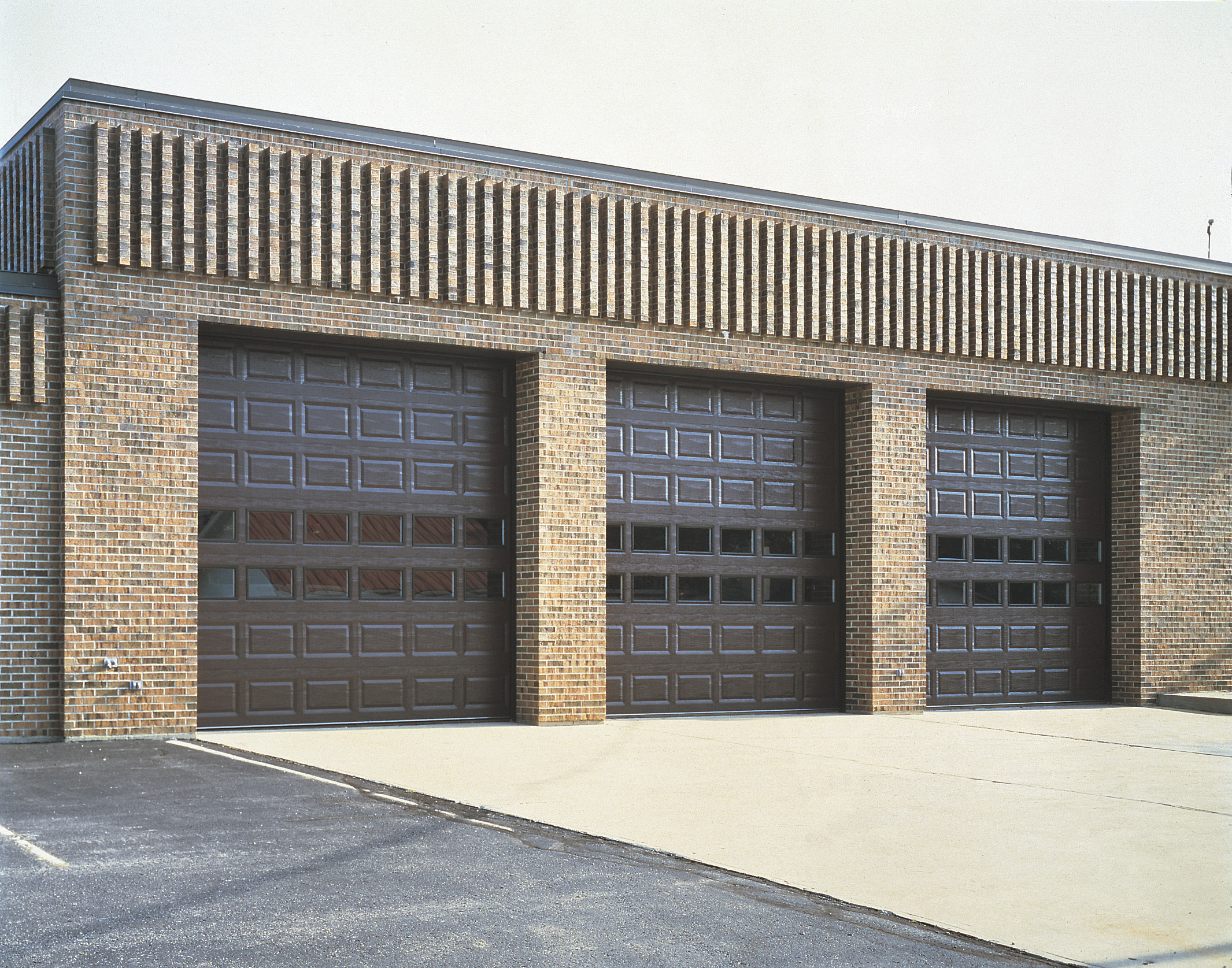

Cornell Commercial Rolling Doors and Security Grilles Blog
When it comes to Overhead Rolling Doors and Grilles, we are the experts in innovative door solutions!
Subscribe
Get updates on new blog posts to your inbox!
Choosing the Right Commercial Door | Cornell Iron
When constructing a new building or renovating a current one, you should outfit your openings in the building envelope with a solution that meets your specific application. If you need overhead doors, there are two primary styles to choose from — rolling doors or sectional doors. Each has different characteristics that may make one a more suitable choice over the other.
Consider Performance

The first question you should ask yourself when choosing an overhead door is, “How often will this door open and close?” Although not every rolling door is made for high cycles, there are high-performance rolling doors that are designed for use in high-cycle applications – some even offer up to 1 million cycles. Sectional doors do not come in high-performance / high-cycle models, but some manufacturers offer springs that will allow a sectional door to cycle up to 100k times. An important thing to remember is more is not always better IF the extra cycles are not necessary.
Choose a Mounting Style
.jpg?sfvrsn=1f3b246d_2)
Rolling and sectional doors mount differently, meaning the space required and installation location will vary.
Installers can mount rolling doors between jambs or to the face of a wall. Since they coil onto a shaft, you'll need adequate headroom above the opening. This mounting is suitable for applications with limited headroom where you don't want to compromise access to the backroom.
Sectional doors offer more installation flexibility, with several mounting options available. Your choices include high lift, vertical lift, standard lift, and low headroom. Each style impacts the amount and location of space required for mounting. For instance, vertical lift doors need more headroom, while a low-headroom installation takes more backroom.
Factor in Installation & Maintenance Aspects
 Installation is an isolated event, while maintenance is an ongoing requirement. It is commonly said that rolling doors are easier to install due to fewer parts, but they are also heavier, which means there may be specialized lifting equipment needed to complete the installation. While both rolling and sectional doors require regular maintenance, rolling doors may require a bit less since there are fewer exposed moving parts.
Installation is an isolated event, while maintenance is an ongoing requirement. It is commonly said that rolling doors are easier to install due to fewer parts, but they are also heavier, which means there may be specialized lifting equipment needed to complete the installation. While both rolling and sectional doors require regular maintenance, rolling doors may require a bit less since there are fewer exposed moving parts.
Understanding Sizing

Generally speaking, manufacturers can create rolling doors in larger sizes than sectional doors, but both are available in custom sizes. With rolling doors, you can achieve the exact dimensions that are needed, while sectional doors are available in certain increments. For example, steel sectional doors offer 2-inch width and 3-inch height increments. Aluminum provides more design flexibility with 1-inch increments for both dimensions.
Similarly, you can vary the slat or section measurements to create a visually appealing look. The standard height for rolling door slats is 2 5/8 inches but may be as little as 1.5 inches high. Sectional door panels can vary between 18, 21, and 24 inches in height.
Explore Materials, Gauges, & Finishes
Decide on the importance of the R-value
Sectional doors have the advantage regarding R-value. This number is a measurement of how well a material resists heat loss. Common R-values for rolling doors go up to 8, while sectional models can have up to 22.2.
Choose an operation method
No matter which style you opt for, you can choose between push-up, hand chain, or motorized operation.
Request a list of recommended models
Since there are many different characteristics for each type of door, it is important to take the time to understand the requirements of your application to choose the best type of closure for your opening. Luckily Cornell offers both rolling and sectional doors!
We're more than happy to assist you with choosing the correct door for your specific application. We've also made it easy to get started with a personalized list of recommended models. Use our product selector tool to identify the options that best meet your structural and operational needs.
Find a dealer near you
Cornell has been providing high-quality closure solutions since 1828. To work with an expert in designing your new door, find a dealer near you or call us at (800) 233-8366. You can also contact us online for more information.

Cornell is the industry leading rolling door, security grille and closure product experts since 1828. To inquire how Cornell's long history of innovation and customer service can help you with your next rolling door project, call 1-800-233-8366!





